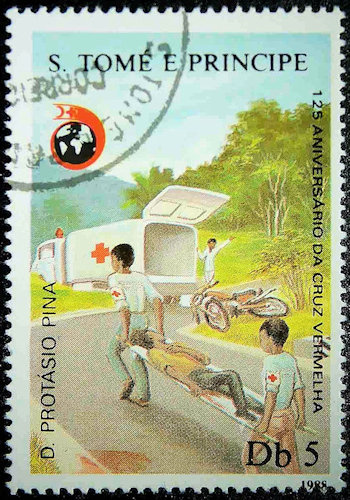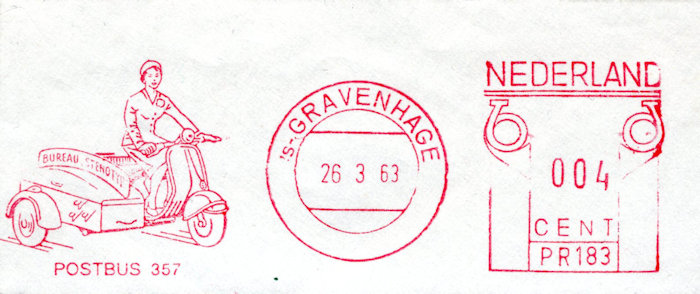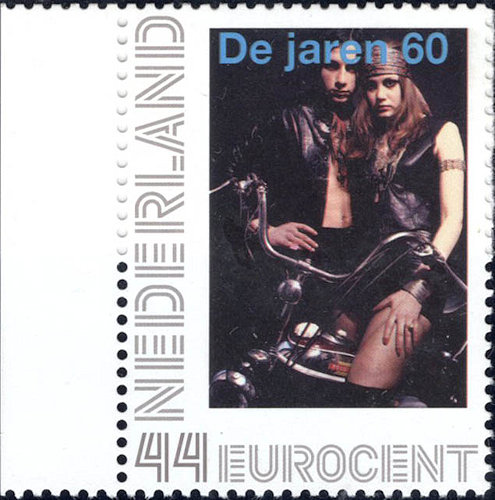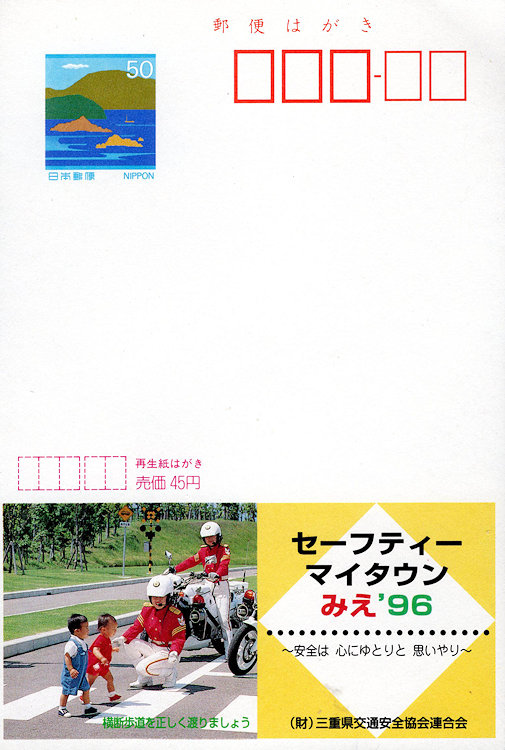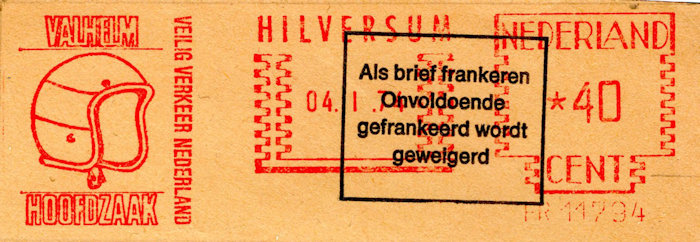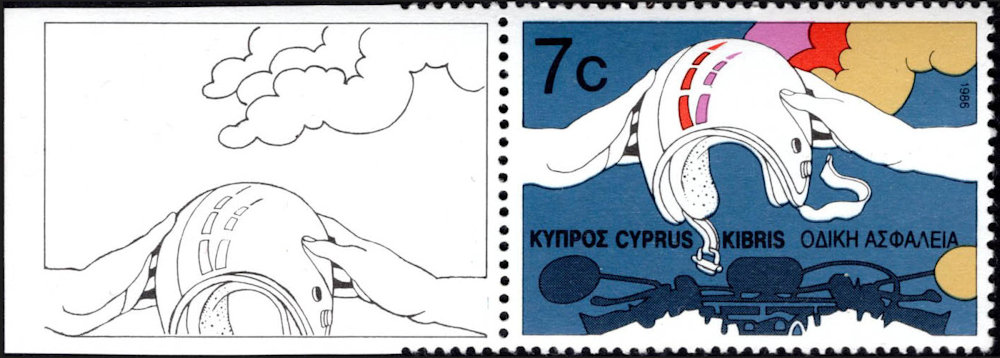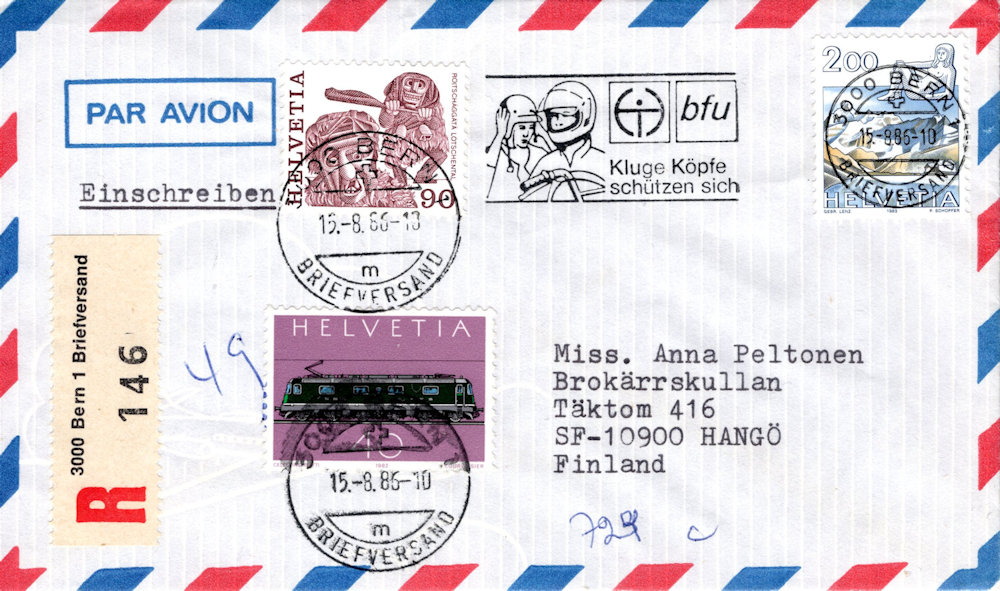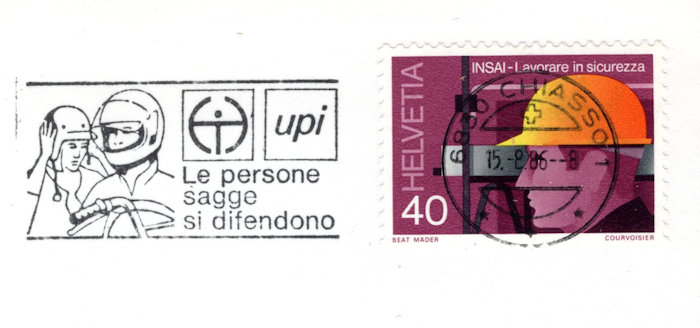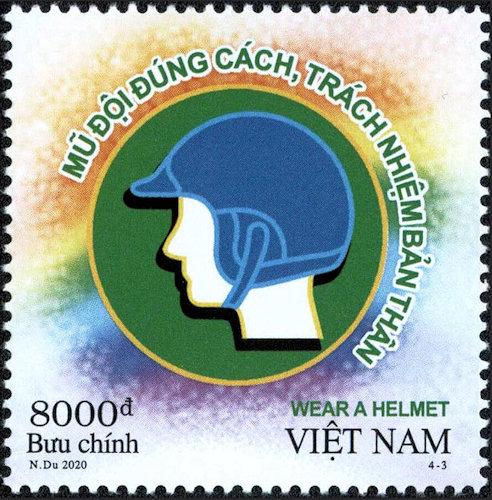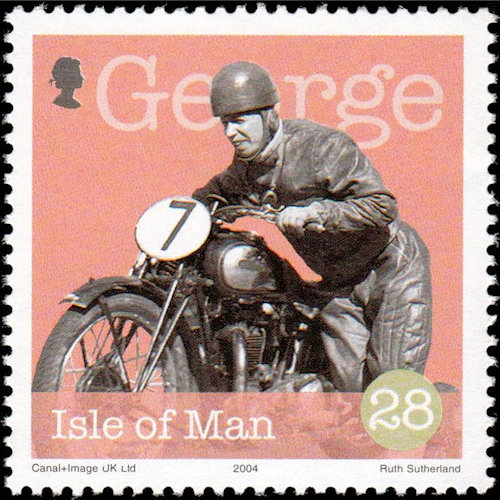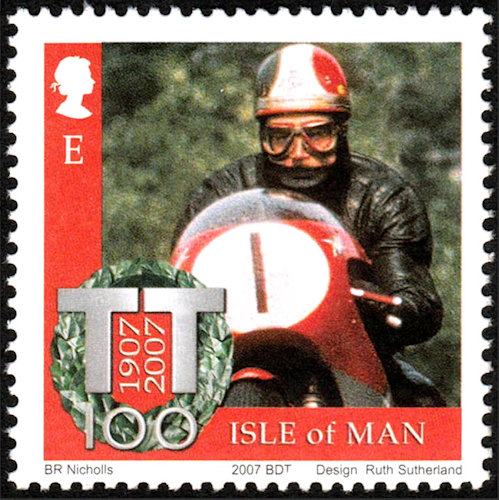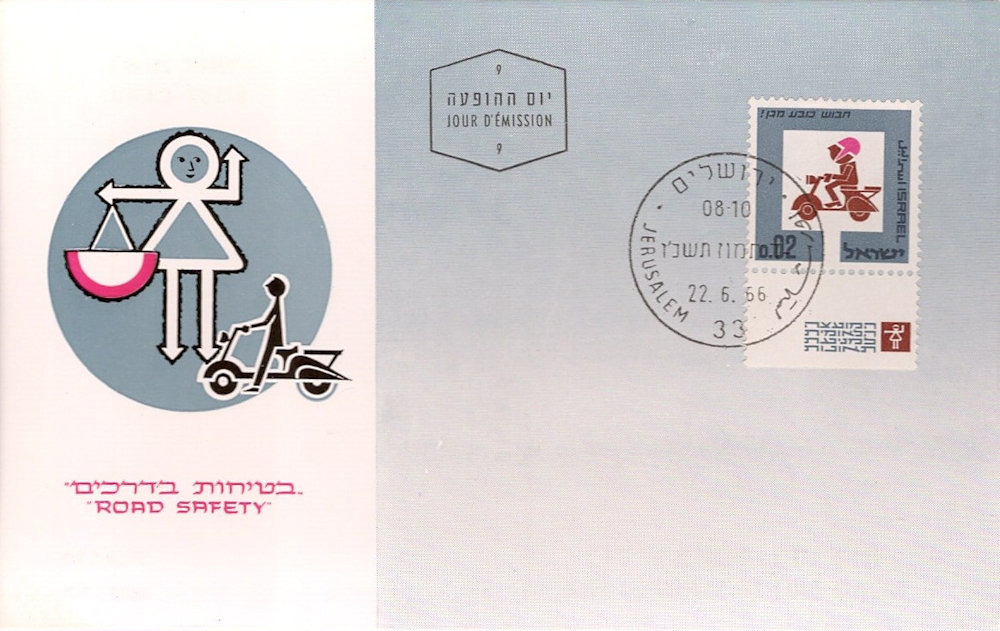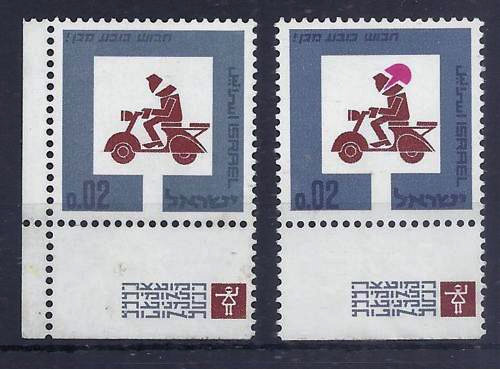50 years helmet wearing obligation for moped ridersThe article below has been written for the Dutch monthly magazine "Filatelie" (philately), and has been published in the February 2025 volume of it under the title "Safety on two wheels: half a century helmet wearing obligation for moped riders". The Netherlands have, next to the standard moped class, a special class of slow mopeds (called "snorfiets", possibly best translated as "whirring bikes"). Since January 1st 2023, also slow moped riders are required to wear a helmet. This is a rather odd move, as the slow mopeds were introduced specifically for people who didn't want to wear a helmet when the helmet wearing obligation for standard mopeds was introduced. In return for the exemption, they had to accept the lower maximum speed limit (25 km/h compared to 40 km/h for standard mopeds). We almost forget that wearing a crash helmet wasn't mandatory in the past. Although crash helmets have been around since the 1920s, they were almost exclusively used by motorcycle racing drivers at that time. Motorcyclists on public roads usually found a cap or a leather aviator's hood sufficient. The first helmet wearing obligation on public roads was probably that of the British army, which required its orderlies (known there as "despatch riders") to wear a crash helmet as early as 1941. |
||||||||
 |
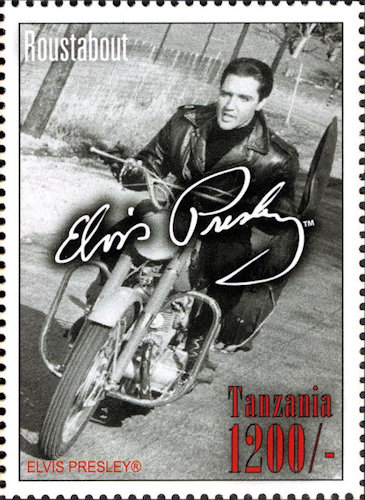 |
Tough movie stars gave the wrong example |
|
The argument that a helmet is in the way is also not very strong, given the fact that motorcycle police officers generally keep their helmets on during short-term emergency duties, and are thus apparently not bothered by it.
 |
 |
It wasn't until January 1st 1972, that motorcycle riders and passengers in the Netherlands became required to wear crash helmets. Three years later, from January 1st 1975, the requirement also applied to moped riders and passengers. Exactly 50 years ago now.
To prepare people for the helmet wearing obligation, the Dutch Road Safety Association (Veilig Verkeer Nederland) campaigned even before the effective date, as evidenced by this red franking stamp.
Also before that time crash helmets were promoted, but often for commercial reasons.
Also in other countries attention has been given to crash helmets on stamps and postmarks. For example, in Cyprus, a road safety campaign was launched in 1986 to emphasize, among other things, the importance of wearing seat belts and helmets.
Tonga also ran a similar campaign in 1991, using for crash helmets the promotional slogan "Crash helmets save lives". Apparently, this was considered one of the most important priorities, given the choice of this very topic for the extra tabs between the stamps!
In 1986 Swiss used a flag stamp with the appropriate slogan "Clever heads protect themselves".
Because Switzerland is officially trilingual, the postmark is also available in several languages. Here's a nice example of the Italian version, used on an envelop with a stamp advocating the use of safety helmets on construction sites.
Recently, Vietnam issued a series of four stamps on the theme of road safety, which also included a stamp recommending the wearing of an helmet.
Stamps also illustrate the development of the crash helmet. It began with simple helmets that protected only the upper half of the head, now often somewhat derisively referred to as "pot helmets." These were initially made of natural materials like canvas, cork, and leather, later combined with a synthetic outer shell.
It wasn't until 1954 that protection was extended to the sides and back of the head, with a helmet designed by the American company Bell. This design was based on the helmets worn by military fighter pilots and was therefore called "jet-style," later simply called a jet helmet. While the improved helmet quickly became common in car and motorcycle racing, it wasn't in everyday use until the mid-1960s. To protect the mouth and nose from dirt and vermin, these helmets, like half helmets, were often worn in combination with a face mask and goggles.
In 1968 it was again Bell that introduced an innovation: the "full-face" helmet, in the Netherlands better known as "integral helmet", which also protects the front of the face. By covering the "viewing hole" with a transparent visor, the mouth, nose, and eyes are also protected from dirt, wind, rain, and other discomforts.
Naturally, the development of the crash helmet didn't stop there. Since then, enormous improvements have been made in protection, comfort, ventilation, and aerodynamics. The fact that a good and properly used crash helmet is a very useful protective measure is proven daily in traffic, but especially in motorsports, where racing drivers survive terrifying crashes often without injuries.
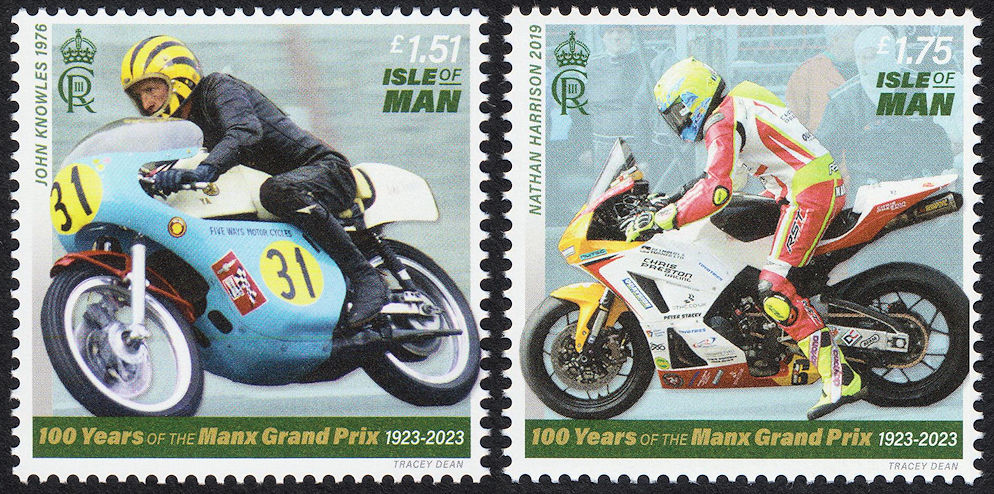
An early full-face helmet (left) and a modern one (right)
Just as with riding motorized two-wheelers, accidents can easily occur when printing stamps. In 1966, Israel issued a series of five stamps with the theme "Road Safety". One of these stamps depicts a stylized scooter rider wearing a striking pink helmet.
And just with this particular stamp, the scooter rider's helmet is missing on a limited number of sheets due to a printing error. Naturally, this is now a highly sought-after item among collectors.
Paul Essens
